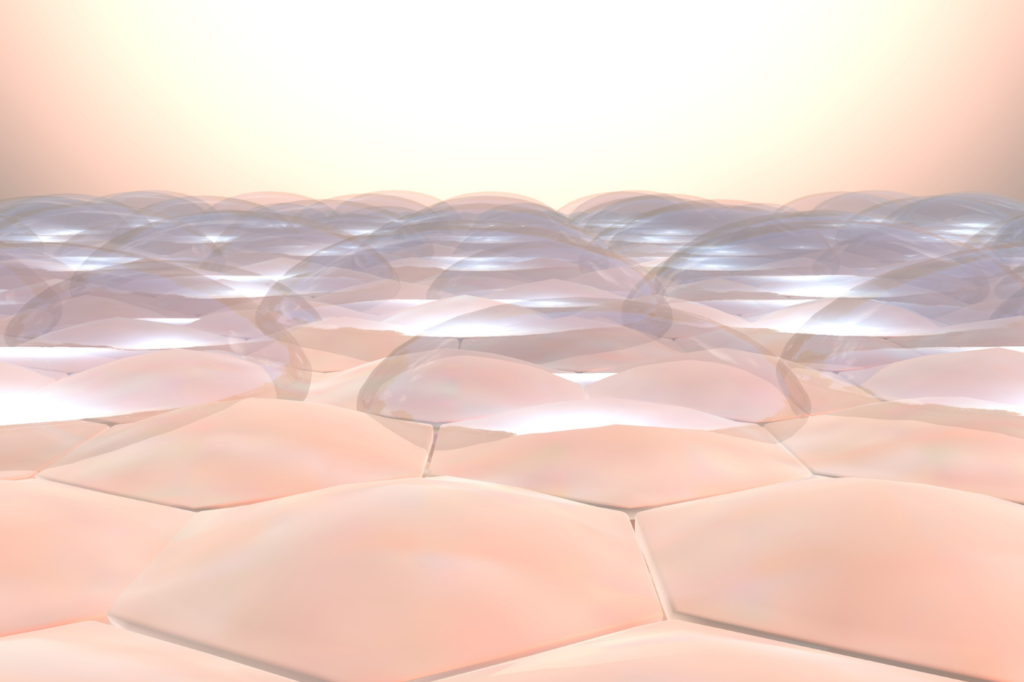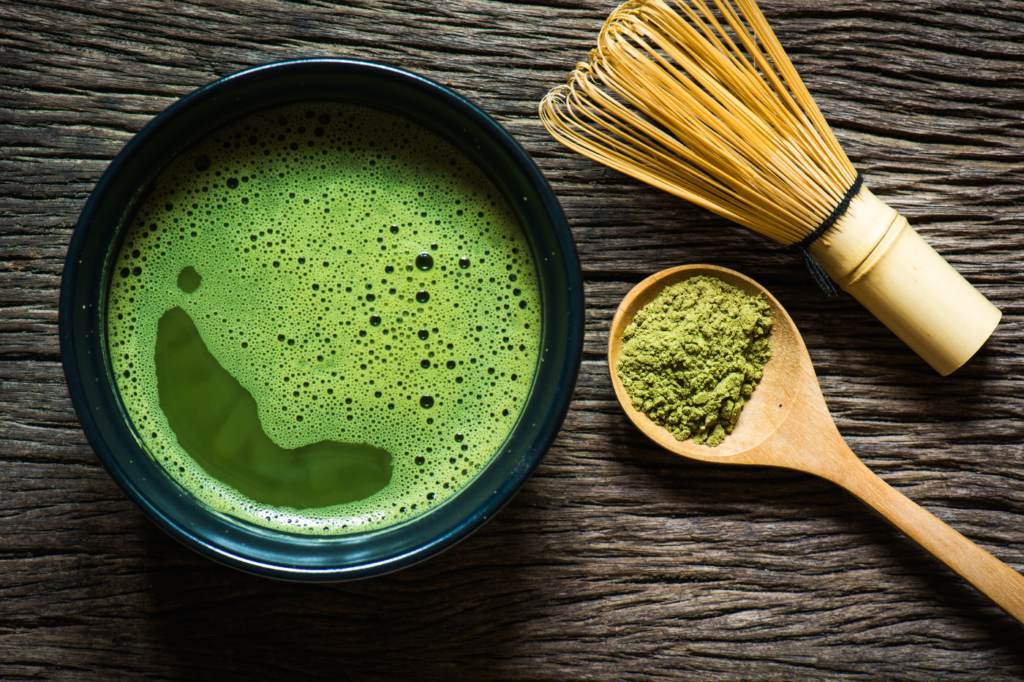You’ve probably heard all about the health benefits of red wine, a source of antioxidant-rich resveratrol. The anti-inflammatory belongs to a class of plant compounds called polyphenols, and they’ve been linked to more than a health boost from wine consumption.
Research shows that polyphenols can protect and rejuvenate aging skin when applied topically and as part of a healthy diet.
Polyphenols for skin aging can be an important piece in keeping your skin healthy and vibrant.
What are polyphenols?
Polyphenols are plant-based compounds that researchers say neutralize free radicals in the body. Scientists call it the biochemical scavenger theory. The compounds, or phytochemicals, seek out free radicals and form more stable chemical complexes in their place.
This process has been linked to immune system boosts, a reduction in several chronic conditions and illnesses, and the overall health of your skin cells.
What is the difference between polyphenols and antioxidants? The difference between polyphenols and antioxidants is simple: polyphenols are a type of antioxidant. The importance of polyphenols to overall health is thanks to their antioxidant activity.
Polyphenols include flavonoids, catechins, tannic acid/tannins, phenolic acids, and ellagitannin. Flavonoids are what you’ll find in fruits and vegetables already part of a healthy diet and in skincare products promising anti-aging effects.
What are the benefits of polyphenols for skin?
Polyphenols offer a protective effect for your skin, giving your epidermis a barrier from skin cancer-causing ultraviolet radiation and other forms of sun and skin cell DNA damage.

Their free radical-fighting effects also protect the skin from environmental toxins like pollution and cigarette smoke.
Are polyphenols anti-aging? Polyphenols include anti-aging properties that protect the skin from the inside and heal the skin from the outside.
Benefits of polyphenols for skin include:
- A boost in mitochondrial function. Polyphenols act as regulators of mitochondrial processes. Healthy mitochondrial function reduces oxidative stress, a link to photoaging and the signs of premature aging.
- Reduced hyperpigmentation. Polyphenols from sources like pomegranate extract may stimulate collagen production responsible for new skin cell growth. This is important to reducing pigmentation caused by harmful UV rays.
- Improved elasticity. Your skin’s elasticity is what allows it to stretch and return to its original place. Our skin loses some elasticity as we age, causing sagging and wrinkles. Polyphenols increase both elastin and collagen lost in the aging process.
- Increased collagen synthesis. Collagen is made up of protein enzymes responsible for new skin cell growth. As we age, collagen declines, and the skin loses some of those protective effects. Polyphenols boost collagen production.
- Anti-inflammation effects. Polyphenols applied topically don’t just give the skin a barrier from the elements. They reduce skin conditions caused by inflammation, such as acne and dermatitis.
- Sunburn reduction. Polyphenols decrease the effects of harmful ultraviolet A (UVA) and ultraviolet B (UVB) radiation. Researchers are even looking for a positive link between sunburn prevention and orally ingested polyphenol sources.
- Improved hydration. Skin treated with topical polyphenols boasts a higher moisture content. Dehydrated skin is dull, uneven, and even wrinkled, accelerating aging.
How to Use Polyphenols in Your Skin Care Routine
It’s easy to incorporate polyphenols into your regular skincare routine.
Can polyphenols be absorbed through the skin? Polyphenols can be absorbed through the skin when applied topically. Various skincare products on the market include polyphenols on their ingredients list, from moisturizers to anti-aging serums to sunscreens.

To get started, look for facial oils, serums, or moisturizers that incorporate polyphenols in a topical application. That can mean ingredients like pomegranate, aloe vera, resveratrol-rich grape extract, or green tea extract. Just be wary of essential oils that may aggravate your acne.
Nourishing DIY face masks that incorporate powerful antioxidants are another option, and you’ll know what you’re putting on your skin.
Pair that with sunscreen to protect your skin from the worst of UV radiation, and you’ll be on your way to safeguarding your skin from those external stressors.
A healthy diet rich in natural polyphenols can also do wonders for your skin.
Getting More Polyphenols In Your Diet
Polyphenols are rich in antioxidant properties that do more for you than fight back against premature aging.
Embrace a diet that includes polyphenols, and you’ll offer your body protection against many age-related conditions and illnesses like heart disease, carcinogenesis, and dementia.
Polyphenols also interact with lipids to promote weight loss, a balanced microbiome, and gut health. You may notice that many of the foods rich in polyphenols are popular in diet fads like the sirtuin diet.
What is the best source of polyphenols? Teas, berries, and red wine are the best sources of polyphenols in a diet. A diet rich in plant-based foods will give you a polyphenol boost without much effort.
High-polyphenol foods include:
- Blueberries
- Grapes
- Cranberries
- Apples
- Plums
- Nuts (chestnut and hazelnut in particular)
- Black and white beans
- Pomegranate juice
- Chicory
- Red onions
- Spinach
- Virgin olive oil
- Cloves
- Turmeric
- Dark chocolate and cocoa powder
- Flaxseed
- Green tea
Green tea deserves a special mention as a great addition to overall skin health. Green tea polyphenols, like epigallocatechin gallate (EGCG), reduce oxidative stress and provide photoprotective effects.

They fight acne by decreasing sebum secretion and boosting skin collagen, a key component of healthier, more vibrant skin.
If your diet is lacking in healthy foods, your skin may suffer. Supplements can help, notably, if you lack nutrients in one area over another. As with any lifestyle change, talk to your doctor if you’re worried about overdoing it and developing balance in your diet.
Polyphenol-rich skin products can give you the boost you need on the outside.
Dermatologist-Recommended Polyphenol-Rich Skin Products
Try the dermatologist-recommended products below if you’re ready to incorporate polyphenols into your skincare regimen.
I include sunscreens on the list, as any healthy skin care regimen should consist of suncare as a critical component of the fight against aging and sun damage.
- COOLA Organic Sun Silk Creme and Face Moisturizer with SPF 30
- Babo Botanicals Daily Sheer Mineral Face Sunscreen Lotion
- Annamarie Exousia Wild Omorfia Balm
- Epionce Intense Defense Serum
- Skinceuticals Resveratrol B E
- Naturopathica White Tea Antioxidant Mask
- TULA Skin Care Dew Your Thing Moisturizing Gel Cream
- DERMA E Vitamin C Intense Night Cream
Sources
- Ruskovska, T., Maksimova, V., & Milenkovic, D. (2020). Polyphenols in human nutrition: from the in vitro antioxidant capacity to the beneficial effects on cardiometabolic health and related inter-individual variability – an overview and perspective. The British journal of nutrition, 123(3), 241–254. Abstract: https://pubmed.ncbi.nlm.nih.gov/31658907/
- Frei, B., & Higdon, J. V. (2003). Antioxidant activity of tea polyphenols in vivo: evidence from animal studies. The Journal of nutrition, 133(10), 3275S–84S. Abstract: https://pubmed.ncbi.nlm.nih.gov/14519826/
- Bastianetto, S., Dumont, Y., Duranton, A., Vercauteren, F., Breton, L., & Quirion, R. (2010). Protective action of resveratrol in human skin: possible involvement of specific receptor binding sites. PloS one, 5(9), e12935. Abstract: https://pubmed.ncbi.nlm.nih.gov/20886076/
- Shirai, A., Onitsuka, M., Maseda, H., & Omasa, T. (2015). Effect of polyphenols on reactive oxygen species production and cell growth of human dermal fibroblasts after irradiation with ultraviolet-A light. Biocontrol science, 20(1), 27–33. Abstract: https://pubmed.ncbi.nlm.nih.gov/25817810/
- Afaq, F., Zaid, M. A., Khan, N., Dreher, M., & Mukhtar, H. (2009). Protective effect of pomegranate-derived products on UVB-mediated damage in human reconstituted skin. Experimental dermatology, 18(6), 553–561. Abstract: https://pubmed.ncbi.nlm.nih.gov/19320737/
- Chowdhury, A., Nosoudi, N., Karamched, S., Parasaram, V., & Vyavahare, N. (2021). Polyphenol treatments increase elastin and collagen deposition by human dermal fibroblasts; Implications to improve skin health. Journal of dermatological science, 102(2), 94–100. Abstract: https://pubmed.ncbi.nlm.nih.gov/33766446/
- Saric, S., & Sivamani, R. K. (2016). Polyphenols and Sunburn. International journal of molecular sciences, 17(9), 1521. Abstract: https://pubmed.ncbi.nlm.nih.gov/27618035/
- Freedman B. M. (2009). Topical polyphenolic antioxidants reduce the adverse effects of intense pulsed light therapy. Journal of cosmetic and laser therapy : official publication of the European Society for Laser Dermatology, 11(3), 142–145. Abstract: https://pubmed.ncbi.nlm.nih.gov/19479604/
- Luo, J., Si, H., Jia, Z., & Liu, D. (2021). Dietary Anti-Aging Polyphenols and Potential Mechanisms. Antioxidants (Basel, Switzerland), 10(2), 283. Full text: https://www.ncbi.nlm.nih.gov/pmc/articles/PMC7918214/
- Rechner, A. R., & Kroner, C. (2005). Anthocyanins and colonic metabolites of dietary polyphenols inhibit platelet function. Thrombosis research, 116(4), 327–334. Abstract: https://pubmed.ncbi.nlm.nih.gov/16038718/
- Davatgaran-Taghipour, Y., Masoomzadeh, S., Farzaei, M. H., Bahramsoltani, R., Karimi-Soureh, Z., Rahimi, R., & Abdollahi, M. (2017). Polyphenol nano-formulations for cancer therapy: experimental evidence and clinical perspective. International journal of nanomedicine, 12, 2689–2702. Abstract: https://pubmed.ncbi.nlm.nih.gov/28435252/
- Ma, J., Zheng, Y., Tang, W., Yan, W., Nie, H., Fang, J., & Liu, G. (2020). Dietary polyphenols in lipid metabolism: A role of gut microbiome. Animal nutrition (Zhongguo xu mu shou yi xue hui), 6(4), 404–409. Full text: https://www.ncbi.nlm.nih.gov/pmc/articles/PMC7750795/
- Pérez-Jiménez, J., Neveu, V., Vos, F., & Scalbert, A. (2010). Identification of the 100 richest dietary sources of polyphenols: an application of the Phenol-Explorer database. European journal of clinical nutrition, 64 Suppl 3, S112–S120. Abstract: https://pubmed.ncbi.nlm.nih.gov/21045839/
Katiyar, S. K., Afaq, F., Azizuddin, K., & Mukhtar, H. (2001). Inhibition of UVB-induced oxidative stress-mediated phosphorylation of mitogen-activated protein kinase signaling pathways in cultured human epidermal keratinocytes by green tea polyphenol (-)-epigallocatechin-3-gallate. Toxicology and applied pharmacology, 176(2), 110–117. Abstract: https://pubmed.ncbi.nlm.nih.gov/11601887/
